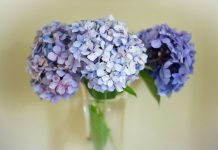A picture’s worth a thousand words.
There’s truth in this old cliché, for my heart is set to singing when I look at the photos of artCentral’s Hyde House filled with happy shoppers.
Our 2018 Holiday Boutique and 5×7 Silent Auction were fabulous successes! My deepest gratitude goes out to all the artists and all the members of artCentral’s Board of Directors and all the volunteers who gave their time and talent and energies to create this beautifully festive experience.
Thanks to all you shoppers who came with your gift lists. Your purchases had our artists dancing happy jigs all over Hyde House.
Though Hyde House is a bit quieter now, our lights remain on and twinkling to welcome the New Year as we move through this memory-making season.
I’ll keep my camera close at hand, as I’m sure many of you will. Taking photos is a splendid way to document the magic of our memory making.
As we danced through our spectacular Carthage autumn I was kept spinning and my shutter constantly clicking. Every time I stepped outdoors photo memories were made and savored and archived in abundance.
My heart warms when I see these precious photos on my digital screens or on my studio walls beside pictures sent from New Jersey celebrating the November birth of our new petite fille. Photos, photos and more photos! I love them! Now I have beaucoup images of the Holiday Boutique waiting for my editing!
Where would we be without photography to help us record and keep our memories?
Wikipedia provides a nice synopsis on how photography came to be “in remote antiquity with the discovery of two critical principles; the camera obscura image projection and the observation that some substances are visibly altered by exposure to light.
Apart from a very uncertain process used on the Turin Shroud, there are no artifacts or descriptions that indicate any attempt to capture images with light-sensitive materials prior to the 18th century.
Around 1717 Johann Heinrich Schulze captured cut-out letters on a bottle of a light-sensitive slurry, but he apparently never thought of making the results durable.
Around 1800 Thomas Wedgwood made the first reliably documented, although unsuccessful, attempt at capturing camera images in permanent form. His experiments did produce detailed photograms but no way to fix these images was found.
In the mid-1820s, Nicéphore Niépce first fixed a camera image that required at least eight hours or even several days of exposure in the camera.
The earliest results were very crude. Niépce’s associate Louis Daguerre went on to develop the daguerreotype process, the first publicly announced and commercially viable photographic process requiring only minutes of exposure in the camera and producing clear, finely detailed results.
The daguerreotype was introduced as a gift to the world in 1839, a date generally accepted as the birth year of practical photography.
The metal-based daguerreotype process soon had some competition from the paper-based calotype negative and salt print processes invented by William Henry Fox Talbot. Subsequent innovations made photography easier and more versatile.
New materials reduced the required camera exposure time from minutes to seconds and eventually to a small fraction of a second; new photographic media were more economical, sensitive or convenient including roll films for casual use by amateurs.
In the mid-20th century, developments made it possible for amateurs to take pictures in natural color as well as in black-and-white.
The commercial introduction of computer-based electronic digital cameras in the 1990’s soon revolutionized photography.
Photochemical methods were marginalized and the quality of moderately priced digital cameras was continually improved. Especially since cameras became a standard feature on smartphones, taking pictures (and instantly publishing them online) has become a ubiquitous everyday practice around the world.”
Gifted photographer and artCentral board member Jane Ballard recently presented our board with a collection of her thoughts on the value of photographers as artists and photography as an art form.
In Jane’s notes, “The word photography is derived from Greek words meaning ‘drawing the light’. Photographers paint pictures, tell stories and record events with their images like painters do. A photographer captures a moment in time in its actuality. Although anyone who picks up a camera can be considered a photographer, to practice photography as an art form and to be considered a true photographer takes a lot of practice, creativity, imagination, technical expertise and knowledge about cameras, lighting, scenery and much more. The camera is just the most basic component of a photographer’s equipment. Photographers also use filters, flashes or strobes, various lenses and other apparatus to record an image then shape that image using editing software to look like the image they see in their minds’ eyes. Photographers are Artists! Photography is art!”
As you finish your shopping, reach out to one of artCentral’s talented Artist Photographers. Select one of their extraordinary images. Give a gift of photography! Give the gift of art! Give the art of photography!
















